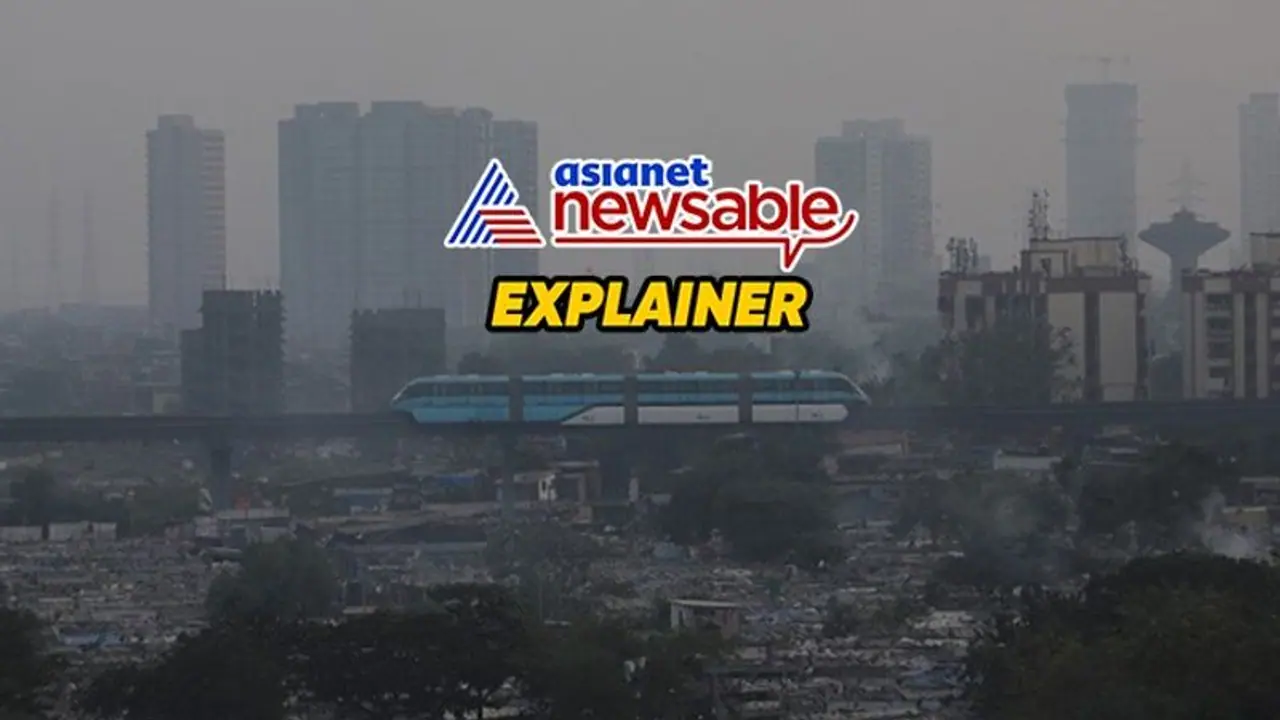The article discusses the deteriorating air quality in Mumbai, the factors contributing to it, and the proactive measures taken by the BMC to address pollution in the city.
Recently, Mumbai has witnessed a concerning deterioration in air quality, with the Air Quality Index (AQI) surpassing 200 (considered 'poor') in various areas of the city in the past few days. This decline occurred nearly two weeks after the conclusion of the monsoon season. The AQI in Mumbai on October 23 morning remained at 173, also categorised an ‘unhealthy’. The main pollutant was identified as PM2.5 by IQ Air.

Factors Contributing to Mumbai's Poor Air Quality
Weather changes have played a significant role in impacting air quality in Mumbai. Last week, the city experienced a rise in temperatures, with the average daily maximum temperature reaching between 32 to 34 degrees Celsius. The abrupt increase in particulate matter in the air in Mumbai can be partially attributed to climate change, the drop in La Nina, or the cooling of the ocean surface, and altered wind patterns.
"Climate change is adversely affecting the air quality of the Mumbai metropolitan area, including the Mumbai region," the Mumbai civic body said last week.
Also read: Poor Mumbai air quality: BMC threatens to shut construction projects
The air quality index, which was categorized as 'good' earlier in the month, has now fluctuated between 'moderate' and 'poor' levels. The AQI categorizes air quality into six levels: 'good,' 'satisfactory,' 'moderate,' 'poor,' 'very poor,' and 'severe,' with corresponding AQI values.
- 'Good' ranges between 0 and 50.
- 'Satisfactory' falls within 51 and 100.
- 'Moderate' spans from 101 to 200.
- 'Poor' extends from 201 to 300.
- 'Very poor' is within the range of 301 to 400.
- 'Severe' is at AQI levels between 401 and 450.
In its Mumbai Air Pollution Mitigation Plan, which was published in March of this year, the Brihanmumbai Municipal Corporation (BMC) listed "dust arising from construction site and construction debris" as one of the top five sources of air pollution. The other four are: the removal of road dust; the open burning of trash and solid waste; the use of dirty fuels in roadside cafes, bakeries, dhabas and restaurants; and a variety of companies, such as those that use casting yard and ready-mix concrete (RMC) factories.
Efforts to Improve Mumbai's Air Quality
To combat this concerning air quality situation, the Brihanmumbai Municipal Corporation (BMC), Mumbai's civic body, has initiated various measures:
Dust Control: Mist machines have been installed at multiple locations, including Worli Sea Face, Haji Ali, Peddar Road, Swarajya Bhoomi (Girgaon Chowpatty), Nariman Point, Fashion Street, Badhwar Park, and the World Trade Center.
Construction Regulations: In response to high pollution levels, BMC Commissioner Iqbal Singh Chahal held a meeting where he warned that construction activities, whether on private or government sites, could be halted if proper dust and pollution control measures were not followed. He suggested measures such as the mandatory use of 35-foot-high iron sheet enclosures around construction sites and the covering of under-construction buildings with green cloth or jute sheets on all sides.
Sprinkler Systems: Sprinkler systems are to be installed at all construction sites within 15 days, and anti-smog guns should be provided within 30 days, as directed by the BMC.
Anti-Smog Guns: The civic body is planning to deploy anti-smog guns on 50 to 60 major roads to combat air pollution.
Pollution Assessment: An official statement has announced that the Maharashtra Pollution Control Board (MPCB) and the BMC will assign experts to assess pollution levels originating from the city's refineries, the Tata Power plant, and the RCF (Rashtriya Chemicals and Fertilizers) plant. These experts will also evaluate the adequacy of pollution control measures in place at these sites.
Proper covering of transport vehicles: The BMC further emphasised the importance of covering vehicles used for transporting construction debris. They should be adequately covered with tarpaulin sheets and must not exceed the specified load limits. To enforce these regulations, the BMC has called upon the transport commissioner's office to take rigorous action against vehicles that do not comply with the guidelines. This action is directed towards vehicles that have exceeded their service life, lack a Pollution Under Control (PUC) certificate, or are involved in overloading, as outlined in the release.
These measures reflect the proactive steps being taken to address Mumbai's worsening air quality, with a focus on both immediate interventions and long-term strategies to mitigate the impact of pollution on the city's residents and environment.
